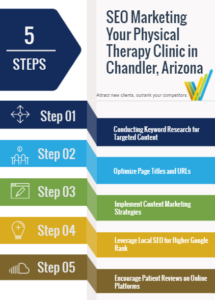One of the most important things you can do to improve the online presence and visibility of your business is to incorporate quality SEO writing into your website.
Without good content writing, your website won’t rank well in online search queries. Most searchers don’t click past the first page or two of search results. If your business isn’t listed there, your site click-through rate (CTR) drops dramatically.
This step-by-step beginner’s guide will help you understand what SEO content writing is, why it’s so important, and how to effectively add it to your site.
What Is SEO Content Writing?
SEO, which stands for search engine optimization, is crucial in making sure your business stands out online. Whether you’re a business owner or a blogger, you want to have the best content possible in order for people to find you. An optimized site delivers a great user experience (UX) by being simple to use, easy to understand, and obvious for search engines like Google to find.
SEO writing is a type of writing that focuses on key SEO principles to help your website stand out. It concentrates on some of the over 200 factors that Google uses in its search algorithm. With the right kind of SEO strategy, your website can climb the search results (or SERPs) and earn that coveted first-page spot.
According to Neil Patel, the SEO copywriting on your site needs to solve a problem and appeal to your users, whether they are clients, prospective customers, or simply searchers looking for valuable information on your site.
Important SEO Terms
Like any industry, the SEO world has its own jargon. Here are some of the most common SEO terms and what they mean:
•Anchor text: The word or phrase that is hyperlinked to another webpage.
•Click-through rate: The ratio of clicks to impressions on any given search result.
•Conversion rate: The percentage of visitors to a webpage that completed a specific action (making a purchase, filling out a contact form, etc.).
•Dwell time: The amount of time a user spends on a clicked search result before returning to the original search engine results page.
•Long-tail keyword: This is a string of keywords, often 3-6 words, to create a more specific targeted keyword.
•Off-page SEO: Tactics relating to search engine optimization performed outside of your own website. Examples include backlinking, social media, and guest blogging content.
•On-page SEO: Also known as on-site SEO, this practice refers to the optimization of web page content for specific keywords to increase traffic. This includes internal links and SEO-optimized types of content, title tags, headings, and subheadings.
•Organic traffic: The number of searchers who found your site on their own and not through a paid ad or link from another site.
•Page ranking factors: The criteria a search engine considers in its algorithm when determining page rank results.
•SERPs: This stands for search engine results pages.
•SERP position: The ranking on a search engine results page for a specific keyword search.
•Technical SEO: The optimization of websites and servers to help search engine spiders effectively crawl and index your site, improving your site’s organic ranking.
5 Key Benefits to SEO Copywriting
Optimized SEO writing should be a core component of any digital marketing strategy. In fact, adding high-quality content writing to your site is one of the most important things you can do to improve your SEO performance. Any SEO agency worth your time will make quality content creation a top priority.
Here are five crucial benefits that SEO content writing adds to your website.
1. Gives Google Something to Rank
If you don’t have any optimized content on your site, there is nothing for Google to rank. The more quality content you have, the better your rankings will be. This is why SEO copywriting is so crucial to your overall digital marketing strategy.
2. Adds Strategic Keywords to Your Content
One of the most important considerations for search engine results is the keywords on a webpage. You want to use keywords and phrases that relate to your business and content. Think of keywords as search terms someone would enter to find your business. For example, if someone searches for “places to buy a boat in Dallas,” the returned results will be web pages that include that phrase or something related to it.
If you’re a boat dealer in Dallas, you want to be at or near the top of the results for this search. The best way to achieve that is through strategic content writing that uses strategic keywords. Many businesses rely on blogs to continually add fresh, keyword-relevant content to their sites.
SEO copywriting is the primary way to add relevant keywords to your site. Without optimized keyword content, it will be difficult for your business to get the attention it deserves.
3. Boosts Your Social Validation
Another consideration that Google and other search engines use for search rankings is social validation. Links that are widely shared on social media outlets add social validation to your site.
If you don’t want to spend a lot of money to get social validation, you need impressive content that stands out on its own. When your site or blog offers valuable new ideas and engaging material, your readers and customers are more likely to share that content with their friends and associates, giving you the boost your business needs.
4. Encourages Backlinks
A backlink is a link from another site to your content. It can also be called an inbound link or external link. Backlinks are a form of social validation that does not require social media sites. To encourage backlinking, you need authoritative, engaging content.
The more backlinks your site has, the more this improves your Google ranking. Backlinks give your content authority and validation. Here are a few strategies on how to acquire more backlinks:
•Quality Content: High-quality content such as how-to articles, list posts, and guides can be great formats that encourage backlinking.
•Skyscraper Content: Skyscraper content is an exhaustive article with extensive details on one subject. These super-detailed posts can be more than 10,000 words and are a popular generator for backlinks.
•Infographics: Infographics are a visual representation of your content in an easy-to-understand format. They usually include facts, charts, graphs, and images and are frequently shared and linked to.
5. Contributes to Your Search Task Accomplishment
In recent years, Google search results are focusing more on something called “search task accomplishment.” This is the idea that the top-ranked results will help the searcher solve the problem they searched for in quick, simple steps.
For example, if you searched for “largest industries in the U.S.,” you’re probably looking for the largest economic drivers in the country. The top results should give you a simple numbered list of the biggest industries in the United States. Further down the results, you might see variations based on GDP, revenue, or even lists broken down by state. The results are solving your “problem” with easy-to-understand information.
With SEO content, it’s important to focus on content that solves problems and understands the user’s intent. Be sure to include content on your site that covers a broad range of search intents. Typically, there are four key intentions for any online search:
•Navigational: A navigational search is when a user is looking for a particular website.
•Informational: This type of search tries to get the answer to a question.
•Investigational: An investigational search helps a user research information before deciding on or purchasing something.
•Transactional: This type of search is when someone is trying to purchase something.
Ideally, your site will contain content that covers each of these search categories.
Best Practices for SEO Content Writing
Before getting started with content writing (or hiring someone to write your piece of content), you need to create your SEO content marketing strategy. Here are some best practices for you to consider:
1. Create a List of Relevant Content Ideas
You want content that will draw people in. You also want to attract searchers who will convert into customers. To reach your target audience, it’s vital to create content that they care about.
It’s good to brainstorm ideas within your company. However, a more effective method is to use online resources to discover what questions people are asking related to your business.
•Q&A sites: Search through question-and-answer sites like Reddit and Quora to discover business-related queries.
•Answer The Public: A free, idea-generating site is Answer The Public. Type in one or two words related to your business and you’ll get a web visualization with questions people have asked about that topic.
•Wikipedia. Wikipedia can be a goldmine for content ideas. Search for the main topic you want to focus on. Then, look through the table of contents on that page for subtopics.
With the ideas you found, you can create a list of relevant blog topics, FAQ pages, and other types of content that will answer questions and offer engaging thoughts. Be sure to update your list regularly so you do not run out of ideas.
2. Do Keyword Research
Once you have your topics selected, you can start your keyword research. This is one of the most important steps in the SEO writing process. Choosing the right keyword can mean the difference between great content that gets thousands of views a month and content that gets none.
Use these keyword research tools to help you narrow down the best-performing keywords for your business:
•Ahrefs: An SEO copywriting goldmine providing a copywriter with an entire suite of tools including site audits, rank tracking, keyword explorer, site explorer, competitor analysis, and more. The keyword explorer tool allows you to enter a target keyword and view top organic search results, backlinking, search volume, keyword difficulty, and domain rating.
•Infinite Suggest: This free tool can help generate hundreds of relevant keyword suggestions including long-tail keywords. Just type in your starting keyword to get started. The downside to this tool is that it doesn’t show you search volume.
•SEORCH: To capture some clicks from the competition, try using the SEO Check feature on SEORCH. To use this tool, enter a URL from a competitor’s website or blog. In the report, find the “Text & Phrases” section near the bottom. Focus on the portion that includes “Frequencies of phrases with 3 words” and “Frequencies of phrases with 4 words.” This section will give you long-tail keywords that have much less competition.
•Moz: The Keyword Explorer from Moz gives you a comprehensive keyword analysis along with keyword suggestions. Enter your starting keyword or URL and sign up for an account to get started.
•Yoast: A WordPress plugin that helps you optimize your content by providing you with key SEO benchmarks and suggestions for improving your ranking.
There are numerous other SEO tools available to help you analyze and refine your keyword selection. You can also hire SEO experts to do this keyword research for you.
3. Use Keywords Wisely
When you know which keywords you expect to perform well, it can be tempting to use them as much as possible. This is called keyword stuffing and likely won’t serve you well. Google is now smart enough to recognize this. The best practice for keyword use is to make sure your focus keyword appears in the following places:
•Title tag
•URL
•First 100 words
•An H1 tag
•An H2 tag
Beyond that, you can sprinkle your keywords naturally throughout your content. You can also use your keyword in an alt image tag if you have any relevant images in your content.
4. Create Comprehensive SEO Content
Multiple studies have shown that longer content performs better in search results than shorter content and usually generates more backlinks. After analyzing 912 million blog posts, Backlinko found the average word count for first-page search results was 1,447.
With a comprehensive page between 1,000 and 2,000 words, you can thoroughly cover a topic without losing the interest of your readers.
5. Craft Attention-Grabbing Titles
When scanning search results, most people quickly check the titles and move on. If something grabs their attention, they might go on to read the brief meta description or click through to the site. This is why creating an optimized title that encourages people to keep reading is crucial. Here are a few suggestions to get you started:
•Use numbers: List articles that include numbers are easy to understand and work well in drawing in readers. Titles like “Top 10 Tips for Baking Bread at Home” will usually bring in more clicks than “Bread Baking Tips.”
•Use emotional words: Use strong emotional words to capture the attention of your readers, for example, “Five Amazing Ways to Impress Your Boss” is more alluring than “How to Be a Good Worker.”
The Headline Studio from CoSchedule can help you create optimized headlines. Type in your headline idea and it will score your headline and offer suggestions on how to make it more effective.
6. Compose Impactful Meta Descriptions
A key component of search engine optimization lies in creating meta descriptions that capture the attention of searchers and improve your click-through rate.
7. Utilize HTML Meta Tags
Meta tags appear in a page’s source code as snippets of text, not on the actual webpage itself. These pieces of information inform search engines about the information contained within a given page.
Unlock Your Potential with Search Engine Optimization from Visual Rankings

Now that you better understand how important SEO writing is to your business, it’s time for an SEO upgrade. If you’re feeling overwhelmed about your SEO needs, Visual Rankings is here to help.
To demonstrate what we can do for you, we offer free, no-obligation SEO audits. We can perform a quick evaluation of your SEO needs and tell you how we can help. We provide a full suite of SEO services including content writing, link building, landing pages, and web design.
Ready to unlock your SEO potential? Contact us today to get started.






